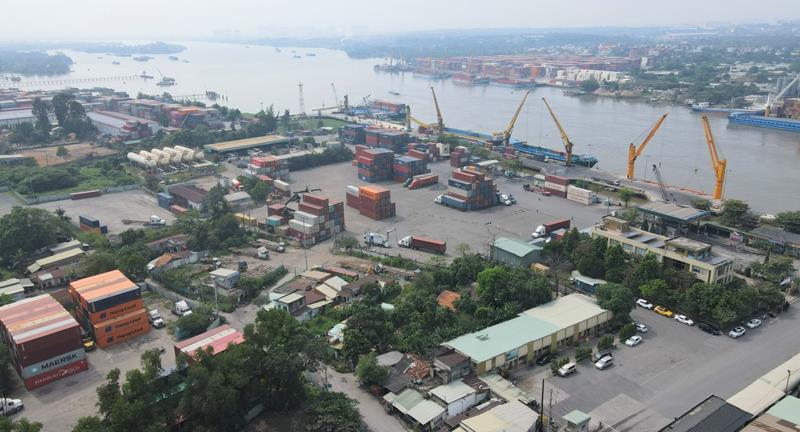(News Portal – Dong Nai) - The Southeast region is currently the most dynamic economic region in the country and it is also where the country's important logistics infrastructure is concentrated.

Loading and unloading goods at Dong Nai Port
Potential for logistics development
The Southeast region has a strong industrial development. According to statistics, the Southeast region currently has 86 industrial parks operating with goods from the southern provinces and cities, creating an abundant source of goods for import and export activities.
Import and export activities of the Southeast region are also supported by the seaport and airport network in the area.
Currently, the Southeast region owns the largest seaport clusters in the country, including Tan Cang - Cat Lai port and Cai Mep - Thi Vai port cluster. Operating alongside with them is Tan Son Nhat airport. In addition, the Southeast region also has a full range of transportation methods from road, railway, waterway to air. All of these factors have created a potential and attractive environment for the logistics industry to thrive.
In the region, there are currently about 14,8 thousand businesses providing logistics services, accounting for nearly 50% of the total number in the country. The region also handles up to 45% of the total cargo volume and more than 60% of the country's container cargo volume through the Cat Lai and Cai Mep - Thi Vai ports.
In the coming time, the logistics industry's development potential in the Southeast region is expected to have more room to expand. This comes from the fact that the Long Thanh International Airport project is being constructed in Dong Nai province, a member locality of the region. With its position as the largest airport in the country when construction is completed, Long Thanh airport is assessed to generate a big "push" which will lead to a major breakthrough for the logistics industry's development.
Mr. Nguyen Duy Minh, General Secretary of the Vietnam Logistics Business Association, said that Long Thanh international airport would help connect trade, including trade of goods between Vietnam and the world and vice versa. This would greatly motivate the region's logistics industry to growth further. "With Long Thanh airport, the southern region will have another mean of transport large cargo by air besides transporting cargo by sea via Cai Mep - Thi Vai seaport" - Mr. Nguyen Duy Minh shared.
Chain of development
Although there have been great developments in recent times, however, the logistics industry of the Southeast Region is still considered to have not utilized all of its potential.
One of the biggest "bottlenecks" slowing down the growth of the logistics industry in the Southeast region has been identified as the lack of synchronization of the infrastructure system, especially the region's transport infrastructure. This has slowed down the pace of development in terms of quality, service and number of businesses in the industry.
From the above reality, in order to remove bottlenecks for the logistics industry in the Southeast region, investing in a synchronously connected transportation infrastructure system is considered an urgent requirement.
Associate Professor - PhD. Ho Thi Thu Hoa, Director of the Vietnam Logistics Research and Development Institute, said that to have a synchronous regional transportation infrastructure, it required the effort of neighboring localities through regional cooperation. From there, it would allow creating a completely connected transportation network, helping goods flow quickly. This would help the value chain of Vietnam's exported goods and let raw materials and accessories to be imported to Vietnam faster, creating a driving force for the development of domestic production activities.
Along with transport infrastructure, localities in the region are also implementing planning for the economic and social development of their own. Synchronizing local planning with regional planning is also expected to create new, favorable space for the logistics industry to develop. Because, to effectively develop the logistics industry, it is necessary to consider regional connectivity factors to be able to plan and develop logistics centers suitable for each industry and source of goods. From there, it will be easier to develop a logistics ecosystem that is attractive to logistics businesses.